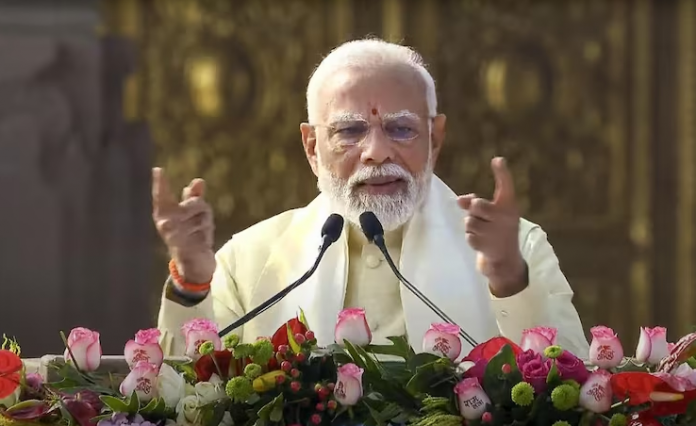Prime Minister Narendra Modi on Monday said that after years of wait, our Ram has arrived. “Ram Lalla won’t have to live in a tent anymore, he will live in a grand temple,” PM Modi said in Ayodhya.
Addressing a rally after the “pran pratishtha” ceremony, PM Modi said,” The sunrise of January 22 has brought a wonderful glow. January 22, 2024, is not a date written on the calendar. It is the origin of a new time cycle.”
He also apologised to Lord Ram for the delay in getting a Ram temple built earlier, adding that the gap has been bridged today.
“After centuries of unprecedented patience, countless sacrifices, renunciations and penances, our Prabhu Ram has come…” he said.
“Ram Lalla will not stay in a tent now. He will stay in the grand temple…” the Prime Minister added.
Earlier, PM Modi performed the ‘aarti’ of the Ram Lalla idol at the Shri Ram Janmabhoomi Temple in Ayodhya.
The idol of Ram Lalla was unveiled at the temple in the presence of the Prime Minister.
He led the rituals at the Pran Pratishtha ceremony.
The childhood form of Lord Ram (the idol of Shri Ramlalla) has been placed in the main sanctum sanctorum at the ground floor.
PM Modi performed ‘parikrama’ of the deity and did ‘dandavat pranam’. He also took blessings from ‘sadhus’
RSS Chief Mohan Bhagwat, Uttar Pradesh Governor Anandiben Patel and state Chief Minister Yogi Adityanath were present at the ceremony.
Indian Air Force (IAF) choppers showered flower petals over Shri Ram Janmabhoomi Temple premises in Ayodhya as the idol of Ram Lalla was unveiled.
Over 8,000 guests have been invited to the ceremony at the grand temple.
The historic Pran Pratishtha ceremony was attended by representatives of all major spiritual and religious sects of the country.
People from all walks of life including representatives of various tribal communities also attended the ceremony.
The magnificent Shri Ram Janmbhoomi Mandir has been constructed in traditional Nagara style. Its length (east-west) is 380 feet; width 250 feet and height is 161 feet; and is supported by a total of 392 pillars and 44 doors.
The pillars and walls of the temple showcase intricately sculpted depictions of Hindu deities, gods, and goddesses.





